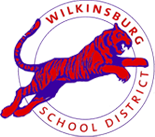Music
|
2nd Grade MUSIC |
|
|
Objective: |
Second grade music aligns with the PA Arts and Humanities Standards and the National Music Standards. The objective of the Music Class is to provide the students with the knowledge and skills related to the elements of music, individual and group performances, understanding the connection of music to history and culture, and understanding of how music connects to other disciplines. The overarching goal is to help the student to develop a love of music and acquire skills that can be carried over into other areas of their lives. |
|
During the School Year Students Will Learn: |
|
|
Creating |
|
|
Performing |
|
|
Responding |
|
|
Connecting |
|
|
What Students Will Do Throughout the School Year |
|
Students will participate in a variety of musical experiences throughout the year. All students will to the best of their ability be able to:
|
|
3rd Grade MUSIC |
|
|
Objective: |
Third grade music aligns with the PA Arts and Humanities Standards and the National Music Standards. The objective of the Music Class is to provide the students with the knowledge and skills related to the elements of music, individual and group performances, understanding the connection of music to history and culture, and understanding of how music connects to other disciplines. The overarching goal is to help the student to develop a love of music and acquire skills that can be carried over into other areas of their lives. |
|
During the School Year Students Will Learn: |
|
|
Creating |
|
|
Performing |
|
|
Responding |
|
|
Connecting |
|
|
What Students Will Do Throughout the School Year |
|
Students will participate in a variety of musical experiences throughout the year. All students will to the best of their ability be able to:
|
|
4th Grade MUSIC |
|
|
Objective: |
Fourth grade music aligns with the PA Arts and Humanities Standards and the National Music Standards. The objective of the Music Class is to provide the students with the knowledge and skills related to the elements of music, individual and group performances, understanding the connection of music to history and culture, and understanding of how music connects to other disciplines. The overarching goal is to help the student to develop a love of music and acquire skills that can be carried over into other areas of their lives. |
|
During the School Year the Students Will Learn: |
|
|
Creating |
|
|
Performing |
|
|
Responding |
|
|
Connecting |
|
|
What Students Will Do Throughout the School Year |
|
Students will participate in a variety of musical experiences throughout the year. All students will to the best of their ability be able to:
|
|
5th Grade MUSIC |
|
|
Objective: |
Fifth grade music aligns with the PA Arts and Humanities Standards and the National Music Standards. The objective of the Music Class is to provide the students with the knowledge and skills related to the elements of music, individual and group performances, understanding the connection of music to history and culture, and understanding of how music connects to other disciplines. The overarching goal is to help the student to develop a love of music and acquire skills that can be carried over into other areas of their lives. |
|
During the School Year the Students Will Learn: |
|
|
Creating |
|
|
Performing |
|
|
Responding |
|
|
Connecting |
|
|
What Students Will Do Throughout the School Year |
|
Students will participate in a variety of musical experiences throughout the year. All students will to the best of their ability be able to:
Various forms including theme and variations, first and second endings.
|
|
6th Grade MUSIC |
|
|
Objective: |
Sixth grade music aligns with the PA Arts and Humanities Standards and the National Music Standards. The objective of the Music Class is to provide the students with the knowledge and skills related to the elements of music, individual and group performances, understanding the connection of music to history and culture, and understanding of how music connects to other disciplines. The overarching goal is to help the student to develop a love of music and acquire skills that can be carried over into other areas of their lives. |
|
During the School Year the Students Will Learn: |
|
|
Creating |
|
|
Performing |
|
|
Responding |
|
|
Connecting |
|
|
What Students Will Do Throughout the School Year |
|
Students will participate in a variety of musical experiences throughout the year. All students will to the best of their ability be able to:
|


